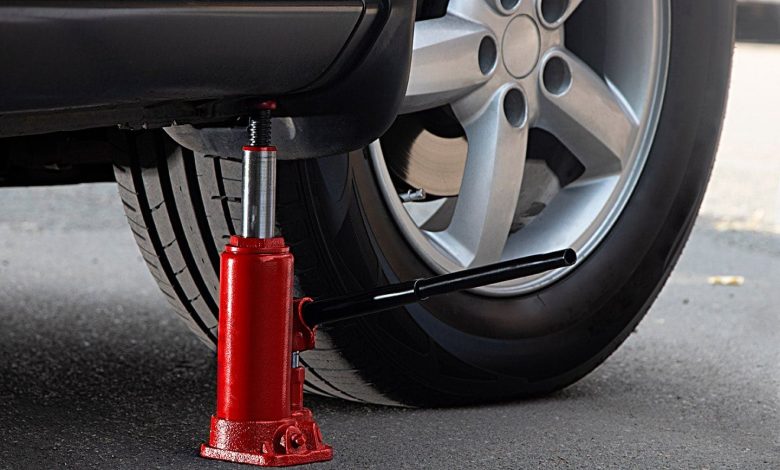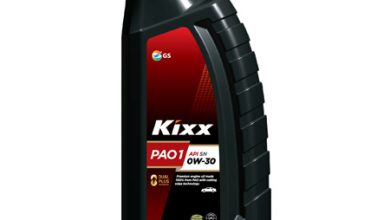In 8 Simple Steps, Learn How to Jack Up a Lifted Truck
Jack up a Lifted Truck, with Lifting Jacks

What if this is your first time lifting a vehicle, and you’re not sure how to properly jack up a raised truck? In this post, you will learn how to elevate your lifted vehicle safely and effectively.
Lifting a raised truck is more difficult than lifting other types of vehicles. Because of its great weight and high ground clearance, it is difficult to manoeuvre. As a result of the modifications you’ve made to your vehicle, you’ll need new methods of performing your repair duties. It is possible that you will not locate adequate jack points that are easy to use, as you would in a conventional vehicle. When is the last time you changed the tyre on your pickup truck? When you have your lifted truck, you’ll need to know how to jack it up.
If you have a flat tyre problem or need to do mechanic maintenance on your lifted vehicle and want to elevate it, you’ll find this article to be quite helpful.
So let’s jack up your elevated vehicle and go to work.
How to Jack Up a Lifted Truck in a Safe and Effective Manner:
1. Safety is a Must:
Work safely by following the regulations. Safety is vital not just while jacking up a lifted truck, but also when jacking up other types of vehicles. It is necessary to use more caution while operating an elevated truck. Work done carelessly might result in harm to you and your vehicle.
When it comes to raising a lifted vehicle, there are a few easy rules of thumb to follow both before and during the task. Make use of a jack with a load capacity that is more than the weight of your truck. The use of a high-quality jack is also essential for working safely. Floor jacks are excellent for raising huge loads that would otherwise be difficult to raise with conventional hydraulic jacks.
In addition to the jack, you’ll need a sufficient number of jack supports to hold your vehicle. As part of the work, Chocks will contribute as well.
2. Locate a suitable location for jacking up the truck.
Find a level piece of land that will allow you to raise your vehicle before beginning your project. Look for a sturdy surface such as concrete or asphalt to park your vehicle on. In the event that you want to raise the truck in your concrete garage, that is also suitable for this task.
If you’re on the road, it’s even more convenient for you. Just make sure that the ground is firm and hard before you begin. Because raising such a large amount of weight on soft ground may result in a sagging problem. It is possible that your jack and jack stand may sink into the earth. It is not recommended to jack your vehicle up on an incline or uneven terrain.
After you’ve found the ideal location, check to see that your vehicle gearbox is in the park position. If you’re driving a manual transmission, change into first gear. Don’t forget to use the handbrake when driving.
3. What is the best way to chock the wheels of a truck?

Let’s put some chocks in your truck’s tyres now. Chocks keep your vehicle from rolling, which is particularly important when the terrain is sloping. The majority of garages have little to no inclination for water to flow through them. If you’re jacking up your truck in your garage, you should never do so without first blocking the vehicle wheels with anything.
When jacking up your vehicle, you’ll need at least two chocks. Always chock the side of your vehicle that is opposite the one that you intend to elevate. Placing chocks on the back wheels of your vehicle will allow you to raise the front of your truck.
If you wish to lift both front wheels at the same time, you must first chock both rear wheels. In this scenario, the chocks should be placed behind the rear wheels. If you wish to elevate the rear wheels, you must first block the front wheels by positioning the chocks in front of the wheels on each side of the lift.
If you wish to lift one of the corners of your vehicle, you must first chock the diagonal wheel on the opposite side of your truck. Consider the following scenario: you wish to replace the rear right tyre. Chock the front left tyre. In this instance, there is no need to chock both front tyres. If you have more chocks than you need, it is preferable to chock both wheels.
4. What are the Jack Points beneath a lifted truck and how do they work?
When it comes to raising your vehicle, jack points are essential. These are the regions where your jack and jack stands will come into touch with them. You should seek for a jack point anywhere in the frame of your vehicle. Because the frame bears the whole weight of the truck, and lifting the frame indicates that you have elevated the vehicle.
Each wheel on your vehicle is equipped with a jack point that is wrapped around the tire. In the case of the front wheels, the jack points are located directly behind the tyres. There are two jack points at the front of the rear wheels, one on each side. In addition, jack points may be found near a wheel on the axle side of the vehicle.
There are two more jack points located between the front wheels and the rear wheels. If you jack up these points, they will lift both the front wheels and the rear wheels at the same time. Lifted trucks have a greater number of jack points than other vehicles, and they are easy to locate. Several jack points are provided by the truck’s steel structure.
If you have any questions concerning the jack points in your lifted vehicle, see your owner’s handbook. It also displays where the appropriate jack points are located in your vehicle.
5. How to Properly Position a Jack Under a Vehicle
Once you’ve identified the jack point in your vehicle, it’ll be much simpler to secure a jack beneath that location. All that is required is that you slip the jack beneath the lift point that you have selected. To raise the front right wheel of your vehicle, place the jack under the jack point that is closest to the wheel and lift the wheel. The jack point is located behind the steering wheel in this instance.
A elevated vehicle has increased ground clearance, and you can simply add a hydraulic jack beneath your truck to increase the ground clearance even more. Because the majority of the vehicles have difficulties with ground clearance. Some jacks can be slipped under a vehicle with relative ease, while others need more space. This occurs in the case of low-profile automobiles as well as with the bottle jack.
It is possible to mount a bottle jack on the elevated trucks since they have sufficient riding height. Bottle jacks are higher than standard jacks and need additional room to slip beneath the jack points of the jack.
If your vehicle has any vulnerable components such as the pan, exhaust pipe, or steering rack, you should never use a jack point beneath them. If you place a jack beneath such spots, you run the risk of damaging sections of your vehicle as a result of the weight of the truck.
As soon as you’ve secured your vehicle with a jack, check to see that the jack has a solid grasp on the jack point. You should be aware that after you have elevated your vehicle, the truck’s angle will vary, and the vehicle may slide off the jack if there is insufficient secure contact between the jack and the jack point. A jack saddle with rubber padding provides a sturdy and firm grip.
6. Is It Possible to Raise a Lifted Truck?
You must first raise the jack to the jack point before attempting to lift your vehicle. Because the jack, even if it is a bottle jack, will not come into close contact with the jack point. You may elevate your vehicle after the jack and jack points come into contact with each other and form a strong grasp.
Pump the jack a couple more times to elevate your vehicle once it has been touched by the jack point. Continue to pump the jack until it raises your vehicle to a height at which you can position a jack stand beneath it, then stop. If you want to elevate your vehicle off the ground, you need figure out how much you want to raise it. Also, check to see whether the jack stand extends far enough. Because your vehicle will be sitting on the jack stand at the conclusion of the day.
7. What is the best location for a Jack Stand beneath the truck?
Place a jack stand next to the jack as soon as your vehicle is lifted off the ground. Stick to the same set of guidelines for jack stands as you did for the jack.
Keep in mind that the jack will only raise your vehicle. The weight is supported by the jack stand. The majority of individuals do not use a jack stand. They are reliant only on a jack, which may result in injury. In order to prevent jacks from failing at any moment, Furthermore, if you haven’t erected a stand, the truck may come crashing down on you, perhaps causing catastrophic damage. Work safely by following the regulations.
After you’ve set the jack stand, lower the jack till the jack stand is able to support the weight of the vehicle. Check again to see whether the jack stand was able to sustain the weight in a secure manner.
Get beneath your vehicle after you are certain that the truck is safely resting on the jack stand. This is where you will do the mechanical repair for which you have been putting in all of this effort.
8. How to Lower a Lifted Truck Using a Chain
Your vehicle will be supported by the jack stand that you previously installed. Bring the jack back to the jack stand and set it next to the jack stand. Raise the jack until it comes into touch with the jack point, then lower it to the ground. Lift your vehicle and pump the jack until it is a few inches higher than the jack stand, allowing you to simply remove the jack stand from the truck.
Immediately after removing the jack stand, carefully open the release valve on the jack, and the vehicle will begin to descend at a gradual rate. After you’ve lowered the jack, the truck will come to rest on the ground and will then be ready to go for a drive.
Conclusion:
The fact that jacking up a lifted vehicle is not nearly as difficult as it seems is shown. The duty is the same as it would be in a regular car. It is only necessary to use suitable equipment and caution while jacking up a raised vehicle in this situation. Lifting your vehicle yourself eliminates the need for a professional when you know how to properly jack up a lifted truck. Lift your vehicle in a safe manner by following the procedure outlined above.




